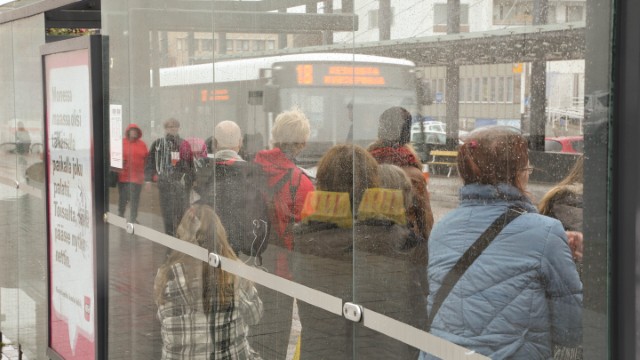Nassim Nicholas Taleb and Gregory Treverton have written an interesting article on the vulnerability and fragility of states. The piece has been published in the latest issue of Foreign Affairs (January/February 2015). They have a simple theory on the factors that increase the fragility of states. The five sources of such fragility are:
- A concentrated decision-making system (centralisation)
- The absence of economic diversity
- Being highly indebted (over-indebtedness)
- The lack of political variability (political stagnation)
- The lack of recent experience of shocks.
Taleb and Treverton discuss several examples of countries already in – or vulnerable to – crisis due to these factors, and a range of countries that probably have the adaptability needed to pull through. Countries such as Syria, Saudi Arabia and China belong to the first category, while Switzerland, Lebanon and Italy belong to the second. The authors emphasise that past stability does not necessarily mean future stability, while recent crises can enhance the resilience of a society. I wonder which category Finland belongs to? And how might we improve the resilience of Finnish society?
Being made up of hundreds of municipalities, the Finnish public administration cannot be deemed a centralised system; making the decision-making processes more open to external expertise and civic participation would enhance Finnish society’s resilience. Our public administration system would also benefit from the systematic use of practical trials and experiments. In an ever more uncertain and complex world, an approach based on small-scale practical trials and experiments in social reform would be better than the traditional approach founded on careful advance planning and large-scale transitions.
That is not to say that we do not already make use of practical trials in Finland, but we do lack mechanisms for efficiently disseminating the lessons learned. By the way, Taleb and Treverton missed the fact that China’s current economic miracle is largely based on economic experimentation conducted in various regions, extensive freedom of action in economic development at regional government level and the central government’s effective dissemination of well-functioning economic models to the rest of China.
The structure of Finland’s economy has long rested on a few strong export sectors. When Nokia was flying high at the turn of the millennium, innovation researcher Tarmo Lemola gave a presentation at a Sitra seminar in which he noted the significant risk posed to the national economy by having all our eggs in one basket. His comments were ignored at the time, but the risk has since been realised and the IT, forest and metal industries have failed to plug the gap by riding the wave of globalisation to create new business opportunities. We now need a much bolder business and innovation policy aimed at the systematic diversification of Finland’s economic structure. This would involve strategic choices on the long-term development of new business areas.
Finland could be weighed down by public sector debt unless spending is brought under control. A debate is underway in Finland on how best to arrest the growth of public debt: directly through cuts, or indirectly via a stimulus programme designed to pull the economy out of its tail-spin and thereby increasing tax revenues? Unfortunately, neither of these macroeconomic doctrines would address the structural problem of Finland’s overly narrow export sector, or the knock-on effects in the national and public economy. The cure for growing public sector debt lies in the approach suggested above: a new business and innovation policy aimed at diversifying Finland’s economic base.
Political stagnation is not a problem in Finland, unless a dangerous consensus on major policy issues prevents successive coalitions from ringing the changes. Despite its short-term benefits for the co-ordination of action at national level, the Finnish love of consensus may actually reduce society’s resilience. We desperately need fresh views on the type of social model and social policy that would help Finland to succeed in the face of ever fiercer international competition. Finland’s decision-making system lacks long-term, cross-sectoral, dialogue-based processes in which experts and decision-makers from various backgrounds can focus fully on finding solutions to the difficult, complex problems we face. In the modern world, it will take more than bankruptcy post-mortems and expert hearings to gain a deeper, more rounded understanding of the knotty problems facing Finland.
The economic collapse of the early 1990s shook the country to its foundations, leading to greater flexibility in business and government institutions in the latter part of the decade. However, the lessons learned were soon dissipated by the Nokia “miracle” and the positive international attention focused on Finland. This could already be seen during the dot.com bubble at the turn of the millennium, when investors once again stampeded to buy shares in companies about which they knew little more than the name. By the 2000s, the fast, big decisions and reforms of the early 90s began to seem like something from another age. The fate of healthcare and welfare service reform is a good example of this. Finland is suffering the fate of the boiling frog – the absence of an acute crisis means that we lack the appetite for change that we had in the early 90s.
In a state of such perilous stagnation, what can we do to reform Finland before the moment of crisis is eventually upon us? At the very least, we could challenge academics, artists, civil servants and the media to make bolder statements about the economic, social and well-being problems that are bubbling below the surface. They could also do more to broaden the terms of the “big conversation” on Finnish society, and to widen the range of interpretations while challenging existing practices and presenting socio-political alternatives.




Recommended